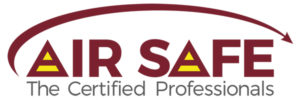Decontamination Services
Decontamination Services
Air Safe, LLC performs biological decontamination for equipment such as Biological Safety Cabinets, Isolators, incubators, cold rooms, Animal Rooms And Caging Systems, as well as entire BSL suites.
If you work with potentially harmful pathogens or other materials in your hood, DO NOT let your maintenance staff perform any internal maintenance on the hood. The hood must be decontaminated prior to any internal maintenance or repairs. All biological safety cabinets should have the appropriate signage denoting all possible hazards within the unit.
It is paramount that the individual(s) performing the decontaminations are educated and very experienced in the entire process to assure safety.
Typical decontamination periods are performed overnight for effective reduction in viable organisms.
Please note:
If an entire room or many rooms are to be decontaminated the facilities must be designed to be leak free. It is important to understand when performing large scale decontamination this fact. Many owners of building and labs may think their room or lab is air tight, but once a decontamination is commenced it is easily determined that the room is not completely sealed. There are various methods to determine a facilities “tightness”. Air Safe can utilize Tracer Gas in order to determine problem areas concerning facility leakage.
Decontamination Methods
There are several methods that can be employed to decontaminate equipment, rooms and in-line HEPA filter banks. Each method has unique pros and cons, and we can assist you in determining which method would be most beneficial for your environment. Keep in mind that in general, any substance that will effectively kill microbes can be potentially harmful to humans! Great care is taken by Air Safe to ensure the safety of our technicians and your staff during any decontamination procedure.
Gaseous Formaldehyde:
The most cost effective form of decontamination for most small and medium systems utilize formaldehyde as the decontaminant. A granular form of formaldehyde is heated until it vaporizes within the sealed environment, then ammonia is used to neutralize the formaldehyde. The main Pro to this method is the relatively low cost. Cons include residue left over from neutralization and the potential risks of formaldehyde escaping an unsealed environment.
VHP (Vapor-Phase Hydrogen Peroxide):
Possible the safest method of all, but also the most expensive. VHP machines are generally self-contained, but tend to be cost prohibitive. Even renting a unit can cost thousands of dollars. Yikes! The future of this method is very promising once the cost comes down.
Chlorine Dioxide:
There are several methods used to generate ClO2 gas. Some systems use tablets that react in water, other methods are self-contained systems. The chlorine gas is then removed from the space using chemical filters. This method is slightly more costly than traditional methods, but the contact time to ensure decontamination is reduced by about half.
Methyl Bromide:
Once used as a pesticide, this ozone depleting gas is no longer used in our industry.
Manual spraying and wiping of exposed surfaces:
Often included in more robust room decontaminations, manually cleaning exposed surfaces is a recommend adjunct to other decontamination methods. This is the only effective method for removing non-biological contamination such as chemical or cytotoxic drug residue.

